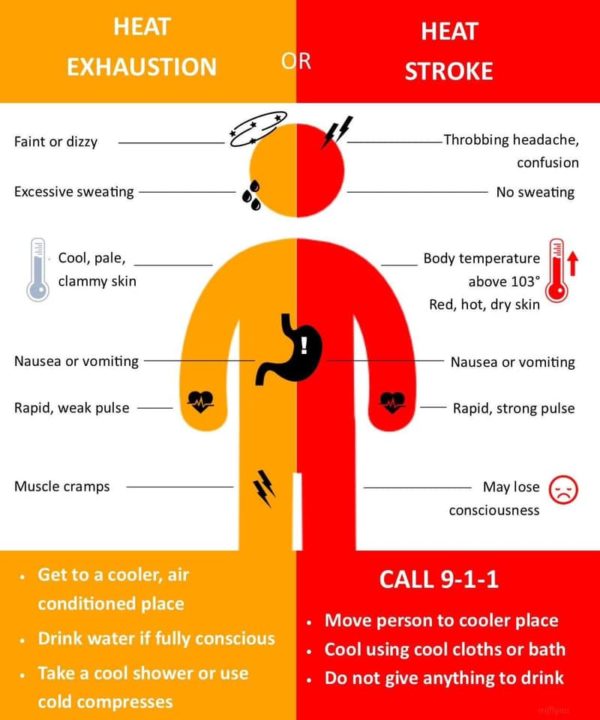Extreme heat occurs during the summer months and is easy to predict. Listen to the local news agencies and first responders and they will inform you when a heat wave is in the area. Temperatures that hover 10 degrees or more above the average high temperature for the region and last for several weeks are defined as extreme heat. Humid or muggy conditions, which add to the discomfort of high temperatures, occur when a “dome” of high atmospheric pressure traps hazy, damp air near the ground. Excessively dry and hot conditions can provoke dust storms and low visibility.
In a normal year, approximately 175 Americans die from overexposure to extreme heat. Extreme heat kills by pushing the human body beyond its limits. Under normal conditions, the body’s internal thermostat produces perspiration that evaporates and cools the body. However, in extreme heat and high humidity evaporation is slowed and the body must work extra hard to maintain a normal temperature.
Most heat disorders occur because the victim has been overexposed to heat or has over-exercised for his or her age and physical condition. Heat emergencies may require immediate medical care. To avoid a heat related emergency, it is important to limit strenuous activities in high heat. Make sure to hydrate by drinking plenty of water, but avoid drinks that contain alcohol, sugar and caffeine. An important action to take if a heat emergency occurs is to get out of the high heat environment and cool down.


